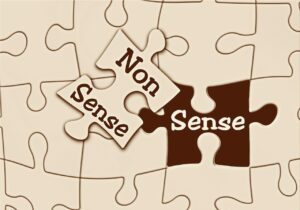The Court in Yemshaw v London Borough of Hounslow[1] defined domestic violence to include ‘physical violence, threatening or intimidating behaviour and any other form of abuse which directly or indirectly, may give rise to the risk of harm.’ The Court went on to state that violence is not restricted to physical violence but could extend to mean ‘strength or intensity of emotion; fervour, passion’. However, the law finds it challenging to address domestic abuse as it is distinctive because it occurs within the context of an intimate relationship as well as being systematic violence[2]. Women are considered likely to experience domestic violence and as such domestic violence is viewed as a gender-based crime.
Over the past decades, there had been developments in the response of the Society to violence against women and there had been improvements in the response to rape, assault and battery and sexual abuse. However, Coercive and controlling behaviour is not easily detected and this has made it difficult to both identify it and then tackle the menace. Most coercive behaviour is not episodic and might not be attached to a particular incident but are rather ongoing and cumulative events that can only become visible by different factors other than the severity of that action[3]. Unlike the traditional domestic abuse where there is evidence of trauma due to severe violence, controlling behaviour, though an abuse, is not so evident. Usually, persons suffering as a result of this type of abuse exhibit little or no trauma which entraps them. In other words, a person could be a victim of abuse without violence even when the victim could desperately be seeking help. This abuse could even extend though the victim has separated from the abuser. The abuse and the harm caused can also persist over time even without violence as violence is not the worst part of coercive behaviour. A behaviour might amount to controlling and coercive behaviour without any element of violence. The absence of violence most times has made coercive control a peripheral thought in the mind of the public and less acknowledged in domestic and criminal law. It is noteworthy that the abuses are so fundamental to the life and development of the victim and as such, abusers ought to receive some sort of criminal liability.
Violence has been a major element of abuse[4]. The implication of this is that any other form of abuse without the element of violence is mostly relegated as secondary without commanding the necessary urgent attention. Rape and Pornography have been viewed majorly from the perspective of violence against women and this has inadvertently, made coercive behaviour almost unnoticeable. Violence is usually an act done to another with the intent to cause physical harm. Since physical harm can be readily seen, it made domestic abuse easier to identify. However, it can be argued that since violence is an act to cause physical harm, any act that has that intention ought to be viewed as violence, whether or not there is physical harm. The intention should suffice. If this was the case, then coercive and controlling behaviour would amount to violence, even when the physical harm is not directly caused by the abuser but a response by the victims to themselves. These are instances where the victim would cause harm to themselves as a response to the mental abuse being suffered. It might not have been the intention but considering or equating abuse with physical harm has not helped in the identification of coercive behaviour in an intimate setting. Truly, such consideration has helped in the fight against domestic violence. It is, however, not far-fetched to posit that controlling behaviour is also abuse, albeit, not in the class of physical violence. Recognizing this would make it easier to recognize victims of this abuse in an intimate relationship. It has been suggested that violence should extend to any tactics or harm that cause emotional or psychological abuse[5]. Therefore, any act was done to intimidate, exploit, regulate or even humiliate a person ought to be viewed as violence.
The sad reality is that the legal response is not alone in curbing the menace of domestic abuse and controlling behaviour. There is a need for attitudinal change as this menace is institutionalised in cultures, patriarchal dispositions and other social and societal forces. The Law can regulate the behaviour of the people but ultimately, the people have to be willing to change. It is common knowledge that a victim might not be willing to get involved in the prosecution of their abusers for reasons which might include the fear that the abuser could retaliate especially when freed. It is also not unheard of that a victim might elect to continue with the relationship with their abuser and thus do not desire the state to interfere. Other reasons could be a genuine concern for the children’s welfare; a desire not to escalate matters to the glaring eye of the public; a lack of support for the victim and so on.
The Concept Coercive and Controlling Behaviour
Coercive behaviour in an intimate setting could be very subtle and sometimes undetected. Dispositions such as preventing access to money, installing surveillance to monitor a partner, and isolating a partner from friends and family, amount to coercive controls even when there is no physical abuse or assault. In many of the listed instances above, victims of such behaviour in an intimate setting do not even consider themselves as victims as they are most often not aware of such abuses[6]. The temptation here might be to restrict controlling behaviour to gender-based violence and when it is majorly true that men are often the abusers in domestic violence, any of the genders could be the perpetrator of coercive behaviour in an intimate setting. Hence, the reason this article attempts to be gender balanced where practicable.
Many countries are gradually becoming favourable to criminalizing behaviour that is coercive and controlling using the example of England and Wales’s enactment of the Serious Crime Act 2015, particularly Section 76. According to the Act, such behaviour must be directed to a partner or family member in an intimate setting[7]. Evan Stark[8] described the general attitude of the law to coercive and controlling behaviour when he analyzed the case of State v. Traficonda[9]. In the case, A had called 911 to report her husband who had beaten her before that time and who in this case had ‘kidnapped’ their child. However, while still speaking, the husband got out of the truck and took the child with him into the house. Being afraid that the husband would kill her and the child, he begged the operator to call off the Police as the husband would be very angry to the point of inflicting harm on her and her child after the Police must have gone. The officers were called off and shortly after, A was found shot dead in the head. The husband explained at trial that he was trying to explain how hunting was done to A when the gun accidentally went off. Despite the conviction of A’s husband for murder, her sister sued the Town arguing that A’s death would have been prevented had the Police responded appropriately due to knowing the history of A with her husband from the 911 conversation. Many laws only mandate the Police to arrest in the case of domestic violence where such a crime would probably occur. Evan argues that the basic training received by the Police ought to have made them aware of A’s risk especially and even when A made a reversal of her request to invite the Police. There are subtle actions that suggest coercive behaviour but victims are usually afraid to identify such abuse, which behaviour might not be sufficient to effect an arrest.
Controlling behaviour can be likened to the act of brainwashing victims which makes them feel helpless and without a way of escape. Coercive behaviour is just an action done by the abuser as it is in the prevention of an action being done by the victim. A person that prevents his/her partner from enjoying their resources, breaching their rights to privacy and undermining their self-respect is exhibiting coercive behaviour[10]. Thus, in the words of Evan, coercive control is more a crime of ‘liberty’ than it is an ‘assault’ crime[11]. Any act done to punish, control or harm another is a controlling behaviour even when there is no physical violence involved. Someone can be a victim of coercive behaviour even when such a victim is physically stronger. A person is a victim psychologically and emotionally which makes strength or size irrelevant.
Human Rights and Domestic Abuse
Domestic violence is more prevalent than one can think. The United Kingdom states that one in every four women and one in every six men can expect to be a victim of domestic violence in their lifetime[12]. Domestic Violence is said to claim about two women’s lives every week and affects millions more[13]. Choudhury and Herring’s claimed that the Human Rights in themselves if properly analysed and understood, provide a veritable source of legal intervention against domestic abuse,[14]though many government instruments have not referenced human rights in their efforts. The reluctance may be unconnected with the fact that rights, especially the right to privacy, have been used to restrict the government from interfering in domestic affairs. It can be argued that removing an abuser from his property is likely to be construed as infringing on such an abuser’s right as well as prosecution against the wishes of the victim. It is within the right of the victim to decide whether or not to prosecute their abusers. Choudhury and Herring argued on the contrary by emphasizing three major points which are that the Human Rights Act of 1998 mandates public authorities to protect violence victims; that the Human Rights Act 1998 requires the Court to prioritize the protection of the victim of abuse as against the property and privacy interest of the abuser; and thirdly that attention must be paid to the children’s interest in an abusive relationship.
The implication of this is that though rights are powerful and mostly could be seen as inhibiting the government’s effort against domestic violence, such rights are not absolute. Instead, it ought to be understood that rights are enjoyed to the extent that it does not affect or trample on the rights of others. In other words, the abuser in a domestic abuse has rights, and so also is the victim. The state is expected to take proactive steps to ensure that no one person infringes on the right of another and by implication, the state must protect the rights of the victims in an abusive relationship. By extension, rights in domestic violence ought not to be a hindrance but a motivator for government to perform its constitutional role of protecting its citizens.
Conclusion:
Creating offence of coercive and controlling behaviour in Nigeria would be one of the many approaches to putting an end to violence against women and domestic violence. Since the offence is a form of domestic violence, therefore, the offence ought only to supplement and not distract from other responses to domestic violence. There is more to be desired to be done as this law does not sufficiently end violence against women. In fact, in practice, the offence of coercive and controlling behaviour may cause more difficulties for the Police than any other violent based crime. The reason is primarily that the crime happens over a long period and it is very unlikely that the Police have the adequate resources or even training to investigate such conduct over that period. This is unlike domestic violence which is evident by bodily harm. This law did not in any way solve the psychological trauma that sometimes creates an unwillingness among victims to engage in the criminal justice system. This paper has shown among other things that even though there is an increase in the records of the report of coercive and controlling behaviour, these reports do not capture the full extent of the people in such abusive relationships as many more would either be unwilling to report for many reasons while some are not even aware they are in a controlling abusive relationship.
Domestic Abuse is a serious crime and as such has been protected though not adequate, by civil remedies such as non-molestation orders; occupation orders; domestic abuse protection orders and notices.
Olusola Alexander
REFERENCES
[1] [2011] UKSC 3
[2] Tadros, V, ‘The Distinctiveness of Domestic Abuse: A Freedom-Based Account’ (2005) 65(3) Louisiana Law Review 989
[3] Evan Stark, Coercive Control: How Men Entrap Women in Personal Life, (Oxford University Press, Incorporated, 2009), ProQuest Ebook Central, http://ebookcentral.proquest.com/lib/tees/detail.action?docID=4704270.
Created from tees on 2022–04–25 08:42:45.
[4] Harne, L, and Radford, J, Tackling Domestic Violence: Theories, Policies and Practice (Maidenhead: Open University Press, 2008) 24
[5] Ibid.
[6] Amy Dale, ‘Criminalising Coercion: Most Victims of Domestic Violence Will Suffer from Psychological Abuse and Coercive Control Long before they are Killed; the Emotional Violence Festers in the Cracks of our Criminal Justice Response, Manifesting in Ways Ranging from Financial Control to Holding Someone Captive in their Home; could Criminalising Coercive Behaviour Save Countless Women before it’s Too Late?’ [2020] LSJ: Law Society of NSW Journal, no. 70, pp. 28.
[7] Bettinson & Quinlan, ‘De-Criminalising Adolescent to Parent Violence Under s 76 Serious Crime Act 2015 (c.9)’, [2020] 84(1) The Journal of Criminal Law, 3–18.
[8] Evan (n 3)
[9] (1992) 223 Conn. 273
[10] Ibid.
[11] Ibid.
[12] Safety and Justice (Home Office, 2003)
[13] Shazia Choudhry & Jonathan Herring, ‘Righting Domestic Violence’ [2006] 20 Int’l JL Poly & Fam 95; Home Office, 2005
[14] Ibid.





Wow, great read